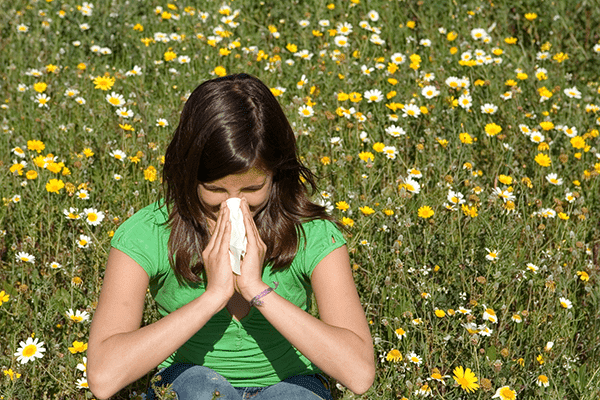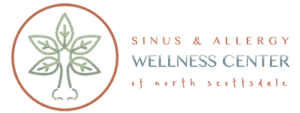Outdoor Allergens in Arizona

Home > Blog > Outdoor Allergens in Arizona
Outdoor Allergens in Arizona
Why Are My Allergies So Bad in Arizona?
It seems like allergies already make our lives miserable enough, but they have also been linked to depression and suicide rates. This does not mean that allergies cause depression, but they can worsen the symptoms.
Of course, everyone thinks of pollen and dust as the main culprits of allergies.
In Kentucky, with plants everywhere, regular rainfall, and lots of agriculture, you would expect allergies. Now that you live in Arizona, you might have thought that the southwestern desert would be the ideal place to escape your allergies, right?
Instead, throughout the year you find yourself wondering, "Why are my allergies so bad?!" As much as moving to the desert seemed like a nice escape from allergy symptoms, it doesn't quite work out that way.
Sources of Outdoor Allergens in Arizona
Arizona is blessed with a year-round growing season, which means that there are always some plants producing pollen. As well, dust, air pollution, and mold are all common allergens that can wreak havoc on your body. Our climate is great for plants and farmers and the availability of fresh produce, but bad for the many people suffering from perennial allergies.
Here’s how you can lessen the effects of common, non-pollen allergens:
- Dust
Several sources contribute to airborne allergens... Small particles, blowing throughout our valley from landscaping work, empty lots, construction sites and open fields all irritate your sinuses, eyes, and respiratory system.
Wind makes dust in the air even worse. Rain performs the very helpful task of damping the dust down, but dry conditions like we commonly experience leave the dirt free to blow around.
Without a decent air filter inside your home, dust from outside will get and remain inside your home. Fortunately, regularly cleaning inside can help you remove these allergens. Make sure to use wet cleaning supplies and methods to completely eradicate the dust.
Also, we recommend that you take your vacuum apart every two weeks and thoroughly clean the filters and wash the dust from the vacuum itself.
- Air Pollution
Between vehicles belching exhaust fumes, miles of concrete, constantly running air conditioners, and the mountains which trap pollutants in the valley, there are plenty of factors reducing our air quality. When the wind isn't blowing, pollutants just hang in the stagnant air. This is even more of a problem for all of the cities located in our Phoenix metro area.
If you suffer from these allergens, the best thing to do is to monitor air quality reports and limit your outdoor activity when air quality is poor. These pollutants cause as many problems for allergy sufferers as pollens. Low air quality and dust are definitely contenders, but pollen is the most serious source of allergens.
*** Track our local daily pollen levels here and pollution pollen levels here. ***
What are the biggest pollen producers in Arizona?
The top allergy-aggravating plant is Ragweed. Nothing about that word makes anyone smile... With several species being native to the Phoenix area, Ragweed creates LOTS of pollen.
Trees make plenty of pollen too, especially between December and May.
- Western juniper, mountain cedar, and hickory make wintertime uncomfortable. When they are finished, other trees pick up the slack. Mesquite clogs the air with pollen from March until May.
- Pine and paloverde cause trouble from Valentine's day until the April showers. Oak and olive make April and May a pain (in the sinuses!).
- Then you have the grasses, these produce irritating pollen from March or April through October. Bermuda grass, in particular, produces a high level of allergens to make your life miserable.
- Even tumbleweed has a part to play. While it has decorated western movies for decades, if you have allergies, keep your distance.
Finding Relief from your Desert Allergies
Of course, it isn't enough to list everything that can cause allergic reactions. The list above is in no way exhaustive. Medical journals exist for such lists.
What can you do about these pollens that make you feel awful and limit your outdoor activities?
- Protect your Home
As much as possible, try to keep dust out of your house. For the inside of your home, get a good quality air purifier. When emptying the dust, do so outside.
When arriving home from work or a day out, change and shower. This keeps pollens and dust you’ve picked up while out from getting everywhere in your home.
Another way to collect dust involves cheesecloth. Put cheesecloth over the vents in your house to trap dust and pollens. Fold it over several times, because the holes in cheesecloth are very large, so several layers are required for this to be effective in catching allergens. Cheesecloth is inexpensive and can be removed, cleaned, and reused.
In your yard, try to alter your landscaping to better manage your allergies. If a certain species of grass bothers you, plant a different grass. Also, look into landscaping designs that use fewer plants. The same goes for trees, get rid of the ones which aggravate your allergies most.
- Protect your Body
The final measure of protection requires getting an allergy test. It isn't difficult, doesn’t take long and depending on the results, your doctor can prescribe specific medications to give you fast relief.
Also, allergy testing may help you reduce the frequency of your medications because if you know WHAT you are allergic to, you can figure out WHEN medications are required, and identify the periods where you don’t need to take allergy medications.
Over-the-counter allergy tablets can help relieve your symptoms when they are bad. We often recommend a daily nasal irrigation rinse as well. Combining a few at home treatments can make your life much more comfortable until you get on a complete allergy treatment plan.
- Don't Wait to Act
Answers for the question, "Why are my allergies so bad?" may be closer than you realize. Depending on the time of year, any doctor can make an educated guess at what's ailing you.
At SWAC, we don’t just guess – we make accurate diagnoses based on careful examinations, interviews, and testing.
When standard allergy treatments don't give you relief, other therapies might. Immunotherapy is one such option., Initially, we expose you to a very small dose of the specific allergen plaguing you and over time, we increase the exposure while carefully monitoring your response, until you are desensitized to the allergen.
About Us
Sinus and Allergy Wellness Center of North Scottsdale serves patients in Fountain Hills, Phoenix, Glendale, Tempe, Scottsdale, and the surrounding communities. If you are interested in allergy testing, immunotherapy treatments or have other allergy questions, contact us here, or call 480-567-7098 for an appointment
Disclaimer:
The information provided in this article is for informational and educational purposes only and does not constitute medical advice. It is not intended to diagnose, treat, cure, or prevent any disease or medical condition. Always seek the guidance of your physician or other qualified healthcare provider with any questions you may have regarding a medical condition or treatment.
Results may vary: Treatment outcomes and health experiences may differ based on individual medical history, condition severity, and response to care.
Emergency Notice: If you are experiencing a medical emergency, call 911 or seek immediate medical attention.



